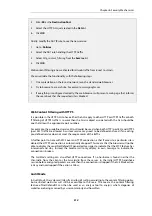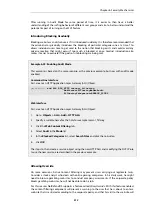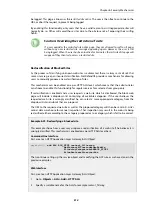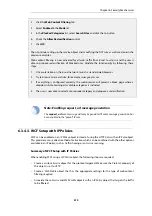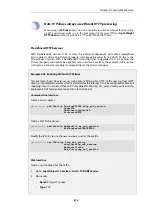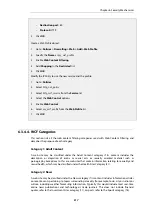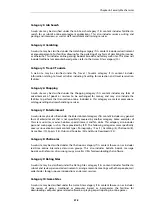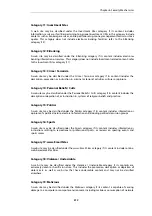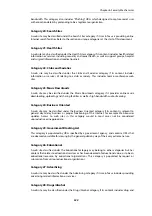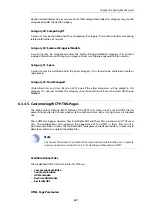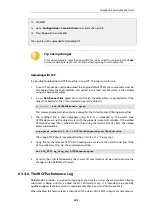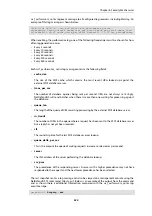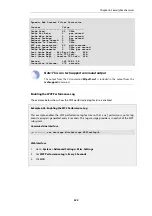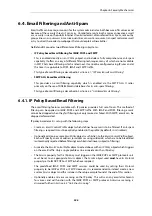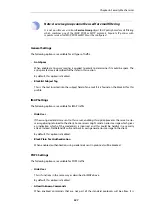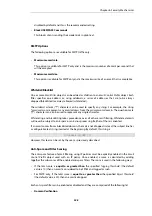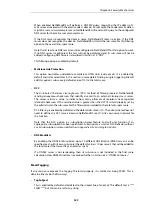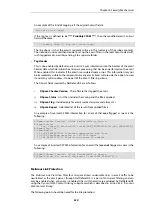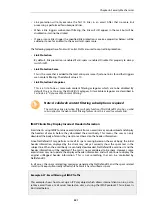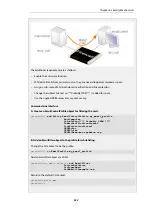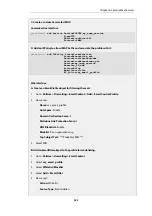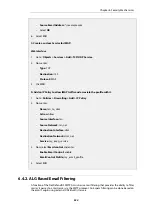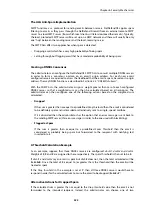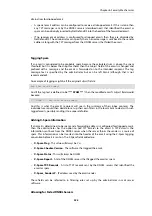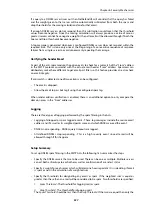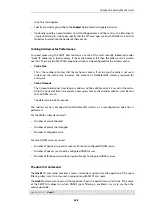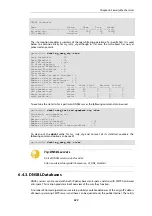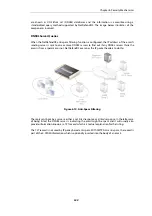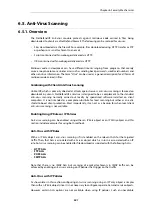
6.4. Email Filtering and Anti-Spam
Email traffic can be a major concern for the system administrator, both because of its volume and
because of the security threats it can carry. Unsolicited email is both a major annoyance as well
as a security issue on the public Internet. Unsolicited email, often referred to as
Spam
, sent out by
groups known as
spammers
in massive quantities, can waste resources, transport malware as well
as try to direct the reader to webpages that could exploit vulnerabilities.
NetDefendOS provides two different email filtering subsystems:
•
IP Policy based Email Filtering for IMAP, POP3 and SMTP
This is enabled directly on an
IP Policy
object and includes a fully comprehensive anti-spam
capability. It offers an array of different filtering techniques, many of which are not available
in SMTP ALG based filtering which is listed next. It cannot be configured using IP rules and at
this time it is applicable to POP3, IMAP and SMTP traffic.
This type of email filtering is described in
Section 6.4.1, “IP Policy Based Email Filtering”
•
SMTP ALG Based Email Filtering
This provides an email filtering capability which is enabled via the SMTP ALG. It relies
primarily on the use of DNSBL blacklist databases for its anti-spam filtering.
This type of email filtering is described in
Section 6.4.2, “ALG Based Email Filtering”
.
6.4.1. IP Policy Based Email Filtering
The email filtering features available with IP policies provide a full set of tools. This method of
filtering can be applied to IMAP, POP3 and SMTP traffic. With IMAP and POP3 filtering, emails
cannot be dropped when they fail filtering but only marked as failed. With SMTP, emails can be
dropped or forwarded.
IP policy based email is set up with the following steps:
•
Create an
Email Control Profile
object which defines how email is to be filtered. If anti-spam
filtering is required it must be explicitly enabled in the profile (by default, it is disabled).
•
Optionally add one or more
Email Filter
objects as children to the
Email Control Profile
object.
Each will specify an email address (or addresses using wildcards) which are to be blacklisted
(automatically rejected before filtering) or whitelisted (never subject to filtering).
•
Associate the
Email Control Profile
object created above with an
IP Policy
object which triggers
on the email traffic. Only a single profile can be associated with an IP policy.
•
The
Service
property for this IP policy must trigger on the IMAP, POP3 or SMTP protocols so it
must be set to an appropriate
Service
object. The
Service
object used must have its
Protocol
property set to IMAP, POP3 or SMTP (whichever applies).
The predefined IMAP, POP3 and SMTP services could be used by setting their
Protocol
property to be
IMAP
or
POP3
or
SMTP
. However, it is recommended to instead create a new
custom
Service
object and this is done in the setup example found at the end of this section.
•
Optionally enable anti-virus scanning on the IP policy. This will scan any email attachments
for viruses and will function with the IMAP, POP3 or SMTP protocol. Anti-virus scanning is
discussed further in
Section 6.5, “Anti-Virus Scanning”
.
Chapter 6: Security Mechanisms
526
Summary of Contents for NetDefendOS
Page 30: ...Figure 1 3 Packet Flow Schematic Part III Chapter 1 NetDefendOS Overview 30 ...
Page 32: ...Chapter 1 NetDefendOS Overview 32 ...
Page 144: ...Chapter 2 Management and Maintenance 144 ...
Page 284: ...Chapter 3 Fundamentals 284 ...
Page 392: ...Chapter 4 Routing 392 ...
Page 419: ... Host 2001 DB8 1 MAC 00 90 12 13 14 15 5 Click OK Chapter 5 DHCP Services 419 ...
Page 420: ...Chapter 5 DHCP Services 420 ...
Page 573: ...Chapter 6 Security Mechanisms 573 ...
Page 607: ...Chapter 7 Address Translation 607 ...
Page 666: ...Chapter 8 User Authentication 666 ...
Page 775: ...Chapter 9 VPN 775 ...
Page 819: ...Chapter 10 Traffic Management 819 ...
Page 842: ...Chapter 11 High Availability 842 ...
Page 866: ...Default Enabled Chapter 13 Advanced Settings 866 ...
Page 879: ...Chapter 13 Advanced Settings 879 ...

